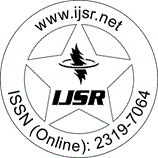Downloads: 0
United States | Information Technology | Volume 11 Issue 3, March 2022 | Pages: 1680 - 1684
Designing Scalable RPA Architectures with UiPath for ERP Ecosystems
Abstract: Enterprise Resource Planning (ERP) ecosystems such as SAP, Oracle, and Microsoft Dynamics remain at the core of organizational operations, yet their complexity often limits agility and process efficiency. Robotic Process Automation (RPA) has emerged as a transformative technology to streamline repetitive, rule-based processes. Scaling RPA within ERP landscapes introduces significant architectural, integration, and governance challenges. This paper explores the design of scalable RPA architectures using UiPath, focusing on enabling enterprise-grade performance, resilience, and compliance. The study outlines key architectural principles including modularity, interoperability, security, and observability that support sustainable automation. It further analyzes UiPath?s orchestration capabilities, native ERP connectors, and AI-driven enhancements as enablers for robust integration and high-volume transaction processing. Attention is given to scalability strategies such as hybrid cloud deployment, load balancing of digital workers, and lifecycle governance via Centers of Excellence (CoEs). Drawing on case studies, the paper demonstrates how organizations have achieved measurable outcomes such as cost reduction, accelerated financial close cycles, and improved compliance by implementing UiPath RPA frameworks across ERP ecosystems. Findings emphasize the importance of standardized development practices, comprehensive monitoring, and change management in achieving long-term automation success. The paper provides a reference model for designing resilient, scalable RPA solutions that unlock greater efficiency and agility in ERP-driven enterprises.
Keywords: Robotic Process Automation (RPA), UiPath, ERP Automation, ERP Integration, Process Mining
How to Cite?: Paul Praveen Kumar Ashok, "Designing Scalable RPA Architectures with UiPath for ERP Ecosystems", Volume 11 Issue 3, March 2022, International Journal of Science and Research (IJSR), Pages: 1680-1684, https://www.ijsr.net/getabstract.php?paperid=SR22331090812, DOI: https://dx.doi.org/10.21275/SR22331090812
